Intégration des Technologies Prédictives dans Mainsaver
Le Défi:
Il existe plusieurs technologies prédictives qui peuvent être utilisées pour identifier les endroits problématiques avant qu'il n'arrive des bris catastrophiques. Ces technologies peuvent cibler les composants qui tournent tels que les roulements et les couplages, et les composantes electriques tels que le centre de contrôle de moteur. Vous trouverez ci-bas 5 des technologies les plus communes.
1. Thermographie
2. Ultrasons
3. Analyses d'huile
4. Surveillance des variations de l'ampérage
5. Analyse des vibrations
Ces technologies peuvent appliquées par du personnel interne ou des entrepreneurs spécialisés. Lors de l'uilisation des technologies prédictives, il est important d'établir les valeurs de référence, puis d'orienter les lectures périodiques afin d'identifier une condition en dehors de la tolérance indiquant possiblement une défaillance future. Le problème identifié peut être corrigé au moyen d'un bon de travail planifié plutôt que de subir un bris et fort probablement un temps d'arrêt.
La Méthode:
1. Établir la hiérarchie des actifs
Le patin de la pompe ci-dessous est composé de 5 composants, dont chacun peut avoir un certain niveau de maintenance prédictive (PDM). Le moteur, la boîte de vitesses, la pompe et les 2 accouplements peuvent aussi avoir leur propre jeu de documents, spécifications et historique de bons de travail. Pour ces raisons, il est important que la hiérarchie des actifs aille jusqu'au niveau du composant.
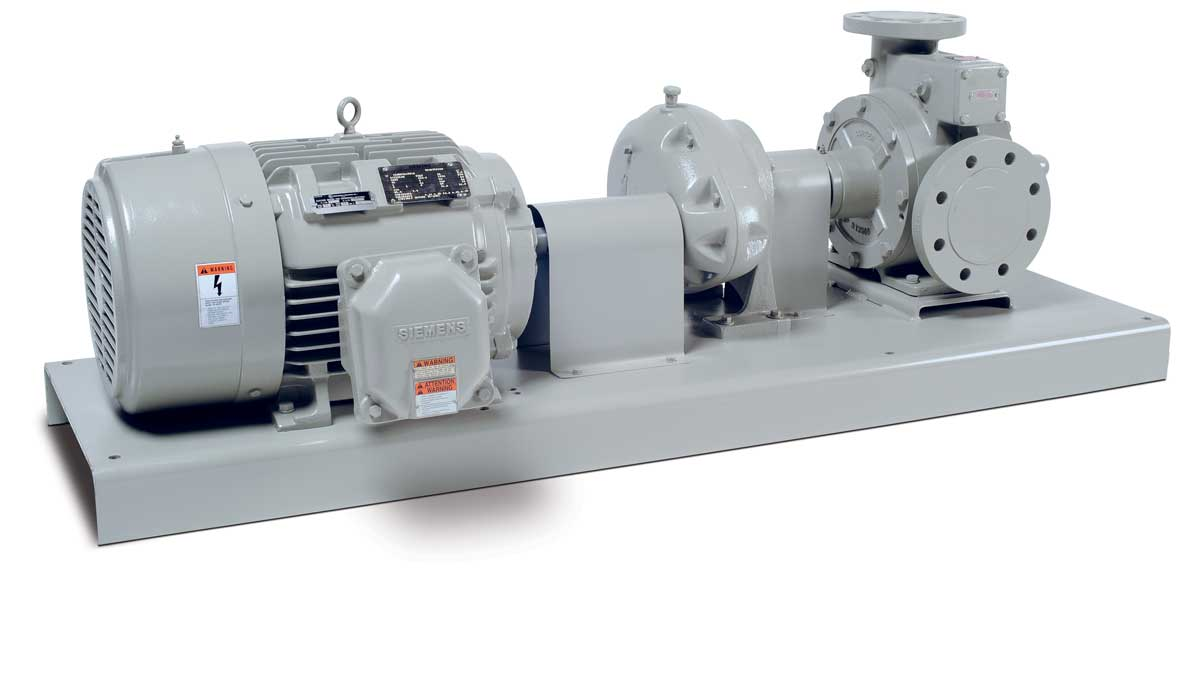
Pump Skid
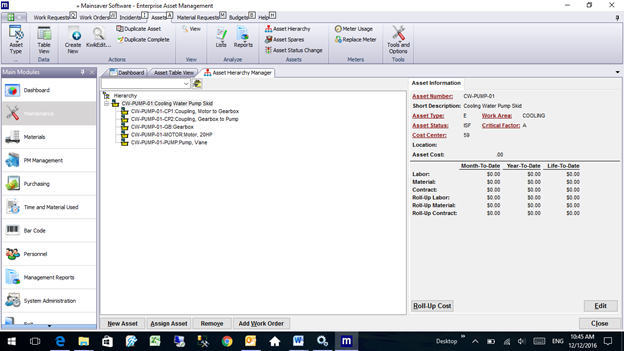
Pump Skid setup in Mainsaver as a parent and 5 child assets
2. Determine High Risk Components
Limitations on budget and manpower dictate that we apply predictive maintenance to the components that will give us the biggest bang for our maintenance dollar. Although there are many methods to prioritize these components, three are discussed below. • Asset Criticality Factor – a dropdown list in Mainsaver on each asset record which indicates the relative importance of the equipment. User definable in System administration, the asset criticality factor is a required field on the asset record and may also include a number factor known as RIME (Ranked Index for Maintenance Efficiency) which may be used to prioritize work orders. Using this method, the criticality ‘A’ assets would be priority with respect to predictive maintenance.
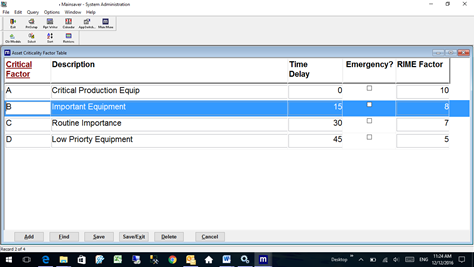
• Risk Matrix – Mainsaver allows users to perform a risk assessment on each asset and identify the assets with the highest risk factor. Within Mainsaver, risk is computed by multiplying 3 risk components which are setup in system administration with a related numeric value for the computation; o Condition Code o Consequence of Failure (COF) o Probability of Failure (POF)
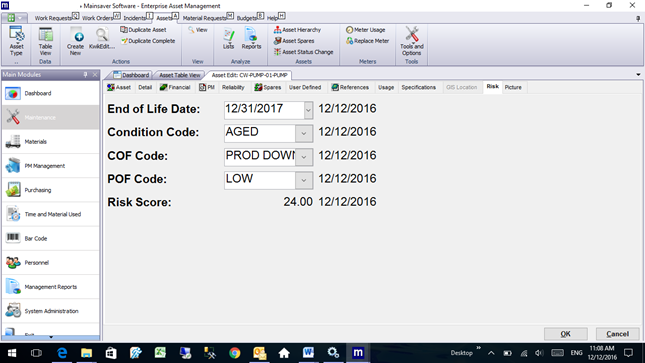
The higher the risk score, the higher the risk
• FMEA (Failure Mode and Effects Analysis) Dating back to the 1950’s, FMEA is a systematic approach to determining the higher risk areas in a plant, system or subsystem looking at several contributors to risk.
3. Setup PM Master Records or Routes
It is common to use Mainsaver to setup PM tasks to perform the predictive work on a calendar interval however the completion of a simple PM work order does not allow the trending of data values. Mainsaver Routes and Job Plans allowing setting up predictive maintenance rounds and recording the readings in the database.
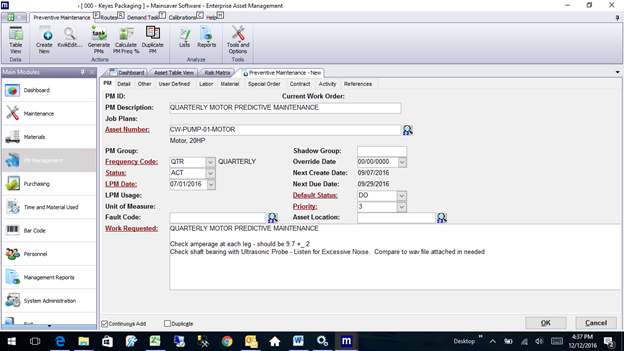
PM record for a quarterly PDM task
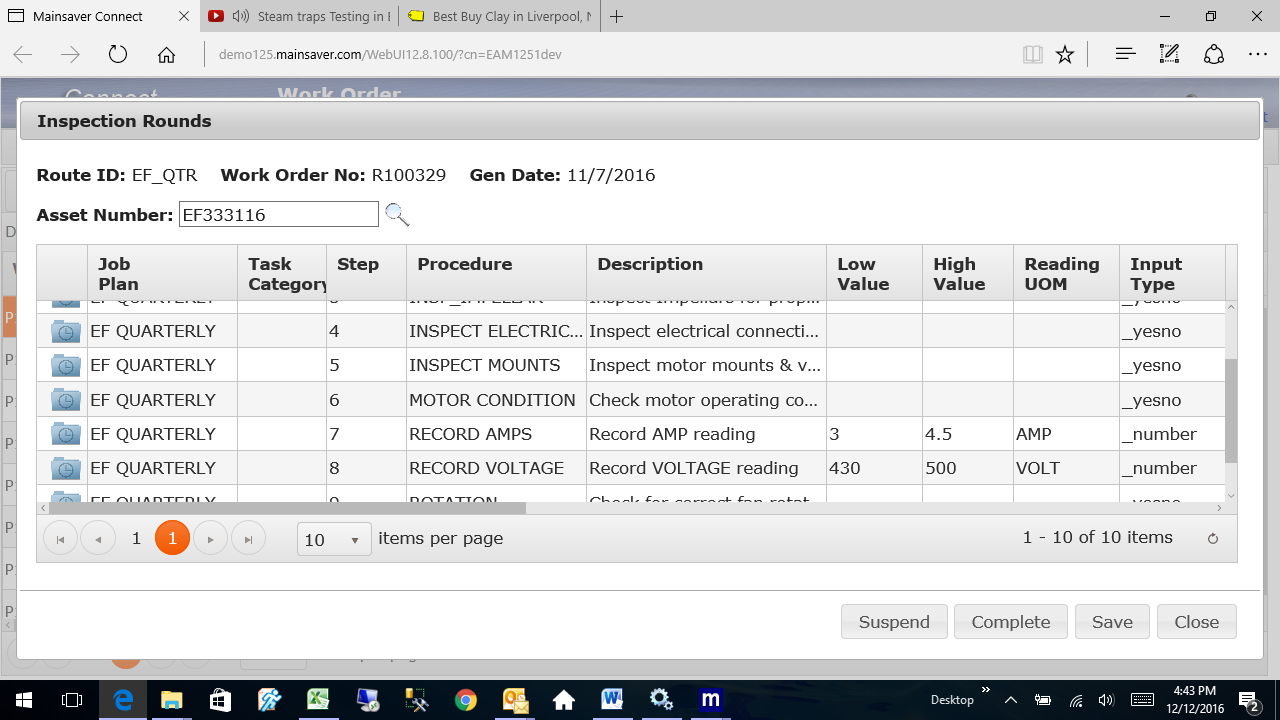
Mainsaver Route with a combination of data feedback types
4. Trend Data
A single data point outside of the context of historical values typically does not provide enough information to determine a potential failure condition. The user needs access to historical data values in order to identify a trend.
Contractors and vendors who specialize in predictive maintenance tools may have their own software for recording and trending values. Oil analysis and other reports often contain baseline data and past test history. The documents may be scanned and/or linked to the Mainsaver asset, PM or work order record to maintain an electronic bridge to this history through the references tab in Mainsaver.
If the data values are recorded in a Mainsaver Route, the historical data may be accessed in graph format on a tablet or laptop while recording new values.
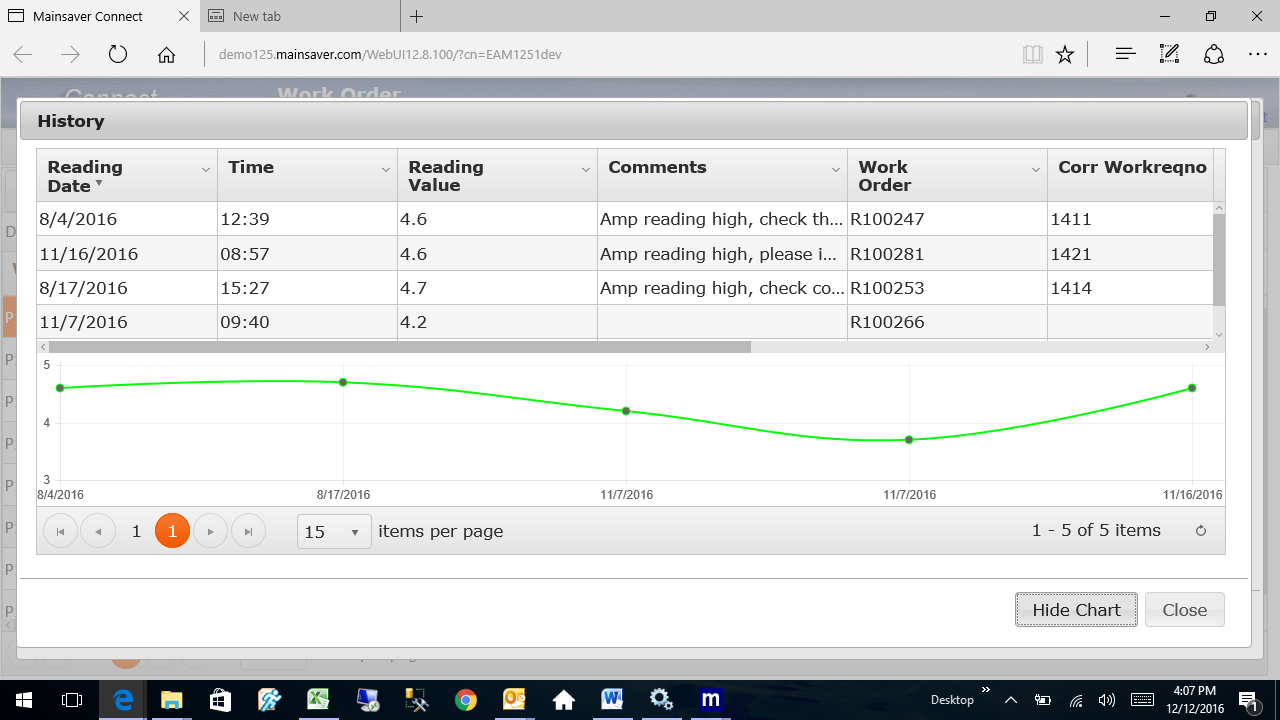
5. Send failed components to ‘Quarantine Area’ for forensic analysis
When a component fails, there might be some lessons learned. What was the cause of the failure? Were we over-greasing the bearing? Do we have a misaligned coupling? Rather than just trashing failed components, they should be placed in an area for forensic investigation. Learn what cause the failure and what countermeasures may be employed to prevent such failures. Countermeasures might include re-engineering the component, changing lubrication processes, adding additional PM steps of increasing the frequency of predictive techniques.
Benefit of Predictive Maintenance
Heading off a catastrophic failure by finding failing components has obvious benefits with respect to downtime and productivity. Additionally, many of the PDM tools provide the ability to diagnose issues with the machine running and all safety guards in place.
Mainsaver offre une variété de solutions GMAO qui se marient parfaitement avec le bon fonctionnement de votre entreprise.



